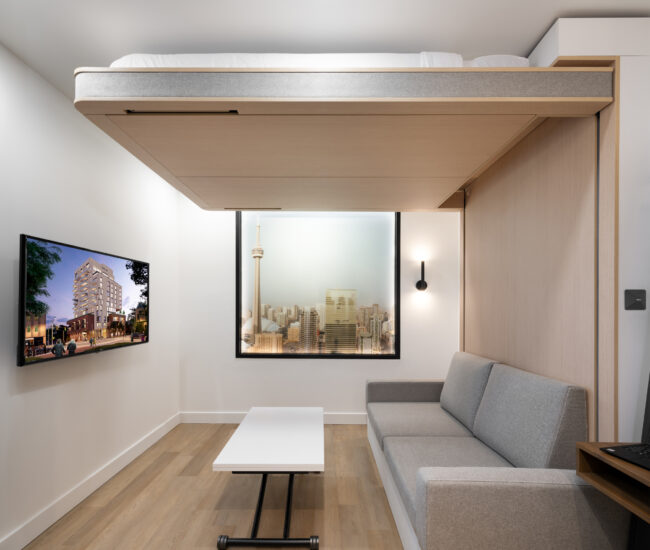These Reno Tips Will Save Your Sanity, Money and Relationship

This is part one of our new advice series called Tips from the Pros, where we ask the city’s top architects, interior designers and developers to share their renovation secrets, horror stories and most memorable ‘make it work’ moments
This week, we hear from superstar architect Heather Dubbeldam, whose Skygarden Home in Summerhill brought nature indoors, the young developers behind 3Gen, who flipped this stately Victorian home into a modern retreat and from multi-faceted architect Johnson Chou whose impressive portfolio includes the Kissen dining and bar chairs
What is the most overlooked aspect of a renovation? Or what is something that always seems to surprise homeowners?
Heather Dubbeldam: People tend to focus on what does not work for them in their current home and how to “fix” that, and often at the lowest cost. This essentially puts blinders on, making it difficult for them to see a broader picture or new vision for living in their existing house.
The costs are often much higher than people imagine, and there are many shows on TV that completely falsify the actual costs to do construction work. The adage “you get what you pay for” is true when it comes to renovations. It’s very important to hire professionals and either work with whom they recommend, or do a lot of your own research on contractors before signing a contract.
The adage, ‘you get what you pay for’ is very true when it comes to renovations – Heather Dubbeldam
3GEN: We find that homeowners are always surprised at the amount of personal dedication involved in a renovation. Whether you work with professionals or have a DIY approach, there are always a lot of decisions, approvals, resourcing and selections that must be made throughout the process. They say that the devil is in the details for a reason.
Johnson Chou: The building’s unknown/hidden structure. It’s not that it is an overlooked item as such, but something that can be tricky to evaluate the state of in advance of construction.
In your opinion, what part of the home should a homeowner never, ever treat as a DIY?
HD: A professional should always be the homeowner’s first option unless they are an experienced tradesperson. Things like plumbing, electrical or structural work not done well can create big problems down the road. Finish carpentry is open game but only to the extent that you can live with your own skill limitations for the finished appearance!
There are things you should absolutely not touch unless you are a certified, trained professional – 3GEN
3GEN: Safety comes first. In the heightening trend of DIY renovations, we always encourage people to use common sense. There are things you should absolutely not touch unless you are a certified, trained professional, i.e. electric, gas lines, hazardous material removal. Invest in your safety, invest in your future and call in a pro.
JC: Really anything structural, electrical or mechanical. These are aspects that absolutely need to be dealt with by a professional. On larger scale renovations, there are many other specialist trades that add great value to a project, but the aforementioned are more typically the ones to avoid DIY-ing.
What is one permit or building rule that may surprise homeowners and is worth knowing about before committing to a reno?
HD: Budget extra time and have a contingency for additional fees and permits. One fee that surprises homeowners is Urban Forestry tree deposits, which are in place to guarantee that mature trees are not killed during a construction project and are held for two years after construction has been completed (and no, they do not pay interest). They can run up to $10K per tree, depending on age and size. We had one homeowner who had to pay a deposit of over $50K for the mature trees on their lot.
We had one homeowner who had to pay a deposit of over $50K for the mature trees on their lot – Heather Dubbeldam
3GEN: We find that most people are surprised that a building permit can be required for such small changes as moving plumbing or removing a wall to create an open concept space. We often encounter reluctance and confusion as to why permits are required for seemingly minor changes, the response often being, “Why, it’s my house?!”
JC: The likelihood of needing to make a submission for a minor variance and the potential complications that can ensue. Committee of Adjustment is very often needed; it is a rare occurrence these days to avoid the need for a variance unless the renovation is entirely interior based. It can lead to neighbour/community opinions being introduced to a proposal, which on occasion can delay or complicate a project quite easily. Applying for a minor variance can ultimately create delays and in extreme situations lead to OMB hearings that are highly complex and expensive. Nonetheless, it’s quite often a given that an application is needed and so approaching any application with a reasonable and well thought-out proposal is critical.
What should homeowners always, always bank extra time and/or money for?
HD: Doing it right. Scope creep. Luxury creep. It can be difficult to tell what you are dealing with in a renovation until construction begins. Unexpected things always come up, including options that were not obvious until you can see the changes starting to happen. Some changes will only cost “marginally” more once the contractor is on the job and it is worth doing it right. Building some contingency into your budget means you can reach your ideal project goals even with these extra costs.
Doing it right. Scope creep. Luxury creep – Heather Dubbeldam
3GEN: Finishes… In every renovation choosing finishes can often push the timeline and/or budget to the brink. These decisions are very personal and we frequently encounter homeowners struggling with this. The most common issues being that they’ve seen something along the way that is over the original budget, forcing them to either loosen the purse strings and expand the budget, or devote additional time to finding a cost effective and aesthetically effective substitute.
JC: The uncovering of the unknown when beginning demolition work on a project can lead to extra time and money being required. So often, items you hope are in good condition aren’t. Carrying a contingency to replace anything from rotten floor joists, door/window lintels that on occasion don’t even exist, or enhancing the general structure of a home that, once opened, exposes several concerns is a must.
What would be your advice to homeowners who are having difficulty deciding where to spend and where to save?
HD: Smart and energy efficient design. This may seem self-serving but strangely people still underestimate the importance of professional design. Hiring a good designer will not only ensure you love every bit of your new space, but can save you thousands of dollars in mistakes, missteps and oversights. And energy efficient or sustainable design can result in long-term savings on energy costs, aside from the health benefits and indoor comfort. Investing in sustainability and energy efficiency has long term benefits that are well documented.
When it comes time to sell, there are classic areas that buyers seldom overlook such as kitchens and bathrooms – 3GEN
3GEN: We always encourage homeowners to spend in areas that are important to them while still taking into consideration the areas that will add the most value to their home (think resale). Every renovation brings a unique set of conditions and challenges, but when it comes time to sell, there are classic areas that buyers seldom overlook such as kitchens and bathrooms. When considering where to spend on renovations, we are firm believers that with taste and curative selection, a little can go a long way in achieving your overall aesthetic goals.
JC: My advice would always be to invest in the areas of a project that are not easily changeable. Make sure you’re happy with the overall scale or size of each space and their relationship to one another, ensure that the fundamentals are in place as the decor and general finishes can more easily be upgraded over time.
What is the most hellish moment you’ve had during a home reno?
There is nothing like a renovation to bring out the worst in your neighbours – Heather Dubbeldam
HD: Unreasonable neighbours, we’ve had a few bad experiences. There is nothing like a renovation to bring out the worst in your neighbours. Understandably it is no fun at all living next to or across from a construction site, however, it is a fact of life in this city that at some point (or many points) in your life, you will live through it. It is important to provide notice, establish an open dialogue, and hire courteous and respectful contractors who keep the site clean and respect by-laws.
Before starting your renovation, size up your neighbours as best you can and work hard to keep them happy. While they may not be able to stop your renovation, they can create costly delays and negative emotions around what will already be a stressful process.
3GEN: On a recent renovation, we noticed water in the basement. When traced back to the source, our team found the water to be coming from the main shut-off valve. We shut the valve off only to discover that the leak was coming from the city-owned side of the supply line. This presented a huge problem for us as we could do nothing to stop the flow of water into the house. To make matters worse, it was a long weekend, and towards the end of the day. Nonetheless, we called the city and they showed up the next morning to shut off the supply at the valve in the sidewalk.
To make matters worse, it was a long weekend, and towards the end of the day – 3GEN
We thought this would be the end of it, only to discover that during a past renovation, someone had somehow disconnected that valve too, so it had no effect. The city eventually got the water shut off later that day by sending more crews to dig up the sidewalk and replace the city-owned shut-off valve, but by this time the basement was full of water. No harm was done in the end as we were gutting the basement and replacing everything anyway; we are just glad it happened at the beginning of the renovation and not the end.
JC: A client some time ago asked us to fully gut an old coach house of theirs, which included adding a small addition to the second storey and transforming a traditional facade into something modern. The coach house was very quaint, located in an elevated area of a large 50-acre site. The initial intent was for the coach house to act as a guest suite for visitors with the design of a much larger main residence to follow elsewhere on the property.
Mid-way through construction, the client fell in love with the location and sprawling views across the hills that the guest house offered and concluded that it should in fact become their main residence. The enormous challenge that followed included designing a second addition that would more than quadruple the footprint of the coach house, but without compromising or undoing the work on site to date which was nearing completion.
Over the course of several weeks we arrived at a scheme that harmoniously integrated a quite grand addition. It was stressful conceptualizing such a dramatic change to a project so late in the game, but fortunately it came together.










